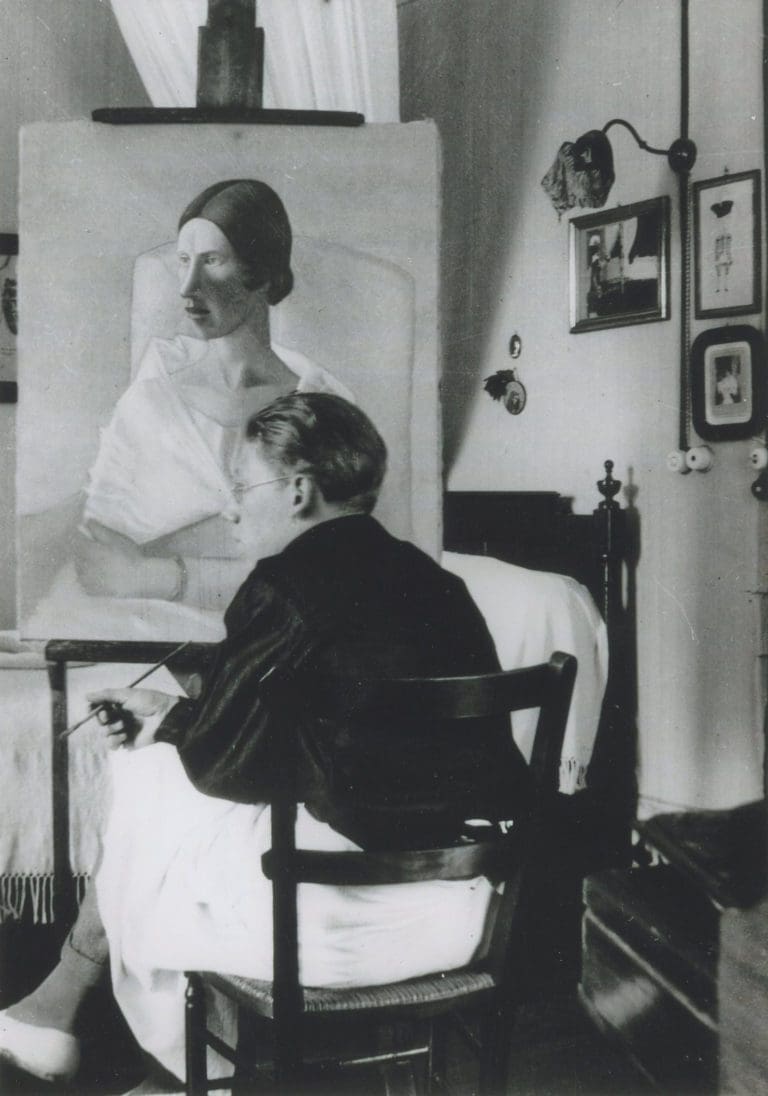I tackle my art as a poetical-plastic transposition. Poetry does not stem from the topic, but from the shapes and colours which compose it. From pastel to stained glass windows or from mosaic to oil painting, what matters is to blend poetry with plastic. I observe because I tend to reach the essence of things and paint not as I see but as I watch. This is how I become myself, in the way of looking, of approaching, of tackling my themes, my topics.
Théodore Strawinsky
Théodore Strawinsky the painter, the engraver, the illustrator, the theatre designer, and, in the latter part of his life, the creator of monumental religious works, evolved in an extremely cosmopolitan environment and benefitted from his father’s contacts and notoriety, in particular his relationship with Picasso: “My contact with Picasso’s work and, subsequently, with the man himself, had a powerful catalytic effect: […] my future direction became perfectly clear” (Catherine & Igor Stravinsky, A family chronicle 1906-1940, p. 70).

He was also a frequent visitor to the ateliers of André Derain and Georges Braque. From 1929 to 1931 he studied at the André Lhote Academy in Paris, keeping in close touch with his artist acquaintances and friends in the French-speaking part of Switzerland, including Ramuz, the Auberjonois family, and Mermod, the publisher and patron of the arts. In the thirties, his family moved house a number of times, exposing the young artist to changing environments and new cultural experiences. After taking up permanent residence in Switzerland during WWII, he turned his efforts increasingly to the applied and decorative arts such as illustrations, theatre sets, and monumental art. At the same time, he continued to execute paintings which he regularly presented at exhibitions until 1988.
Strawinsky adapted his formal language to the subject matter he chose or to the specific conditions contained in commissions. His work oscillated between different aesthetic models. The emotion expressed with the stroke of a brush or the dash of a pen, characteristic of the work of Matisse or Raoul Dufy, contrasted with the linear and sculptural rigour typical of the ‘return to order’ and ‘artistry’ movements, exemplified by his models André Derain and André Lhote. Throughout his life, Strawinsky dialogued with Picasso’s post-cubist, neoclassical and surrealist work, but rejected any kind of label. The liberties taken by Picasso with regard to formal and figurative variables served as an example for Strawinsky, as did the works of Matisse, Braque and Derain.

Aesthetically and culturally, he shared some common features with another artist of Slav origin settled in the French-speaking part of Switzerland, who had launched into the art world in Paris, during the same period: Balthasar Kłossowski, alias Balthus.
Philippe Kaenel
Fondation Théodore Strawinsky
Rue de Jargonnant 2
1207 Geneva (Switzerland)
All rights reserved ©Fondation Théodore Strawinsky 2022 – Proudly made by Studios-S, Genève LTD